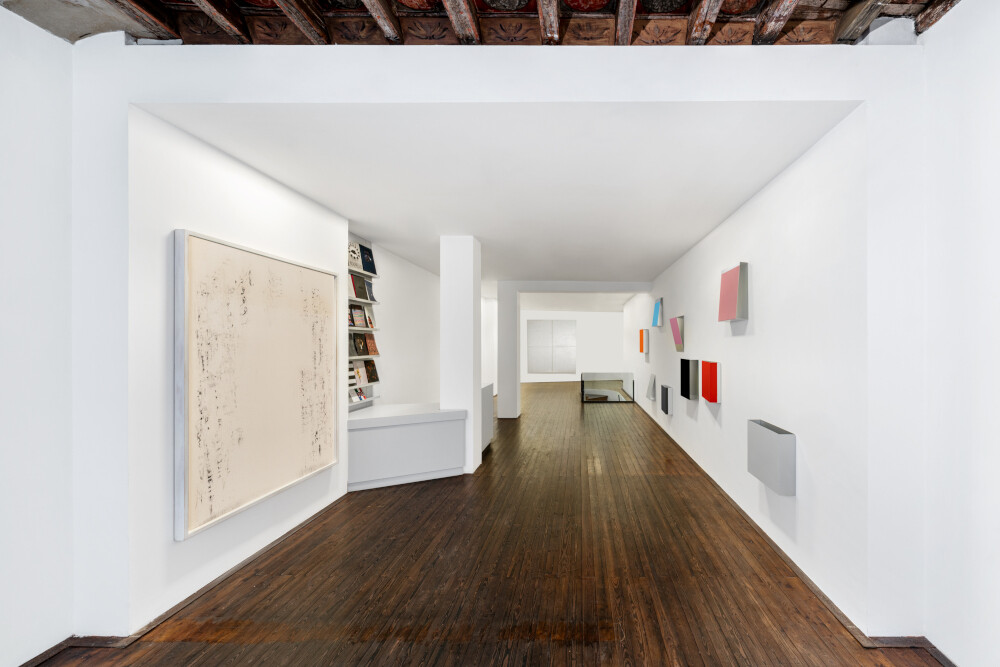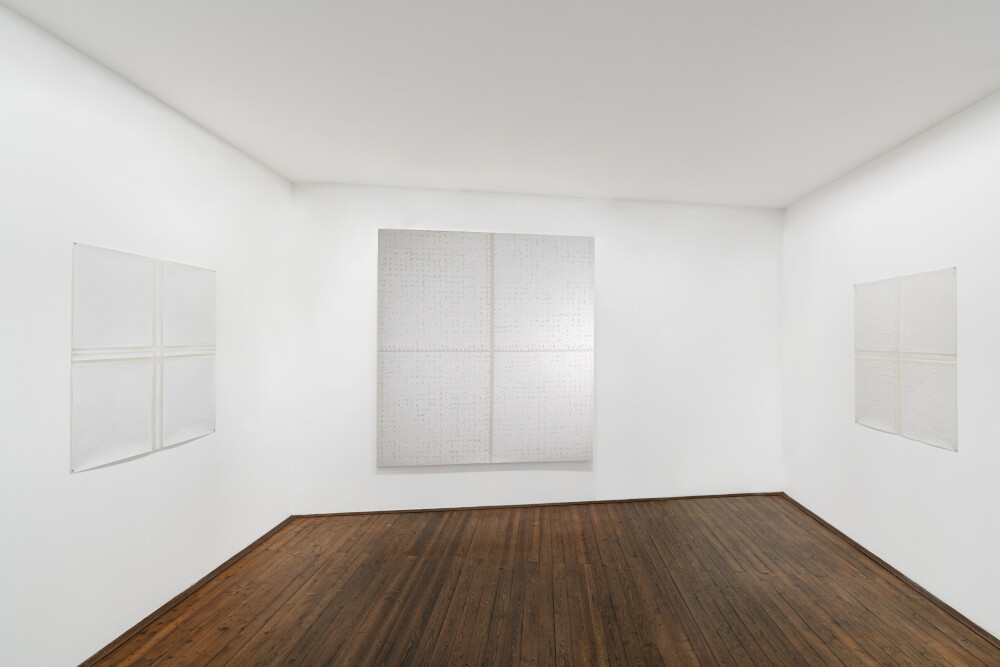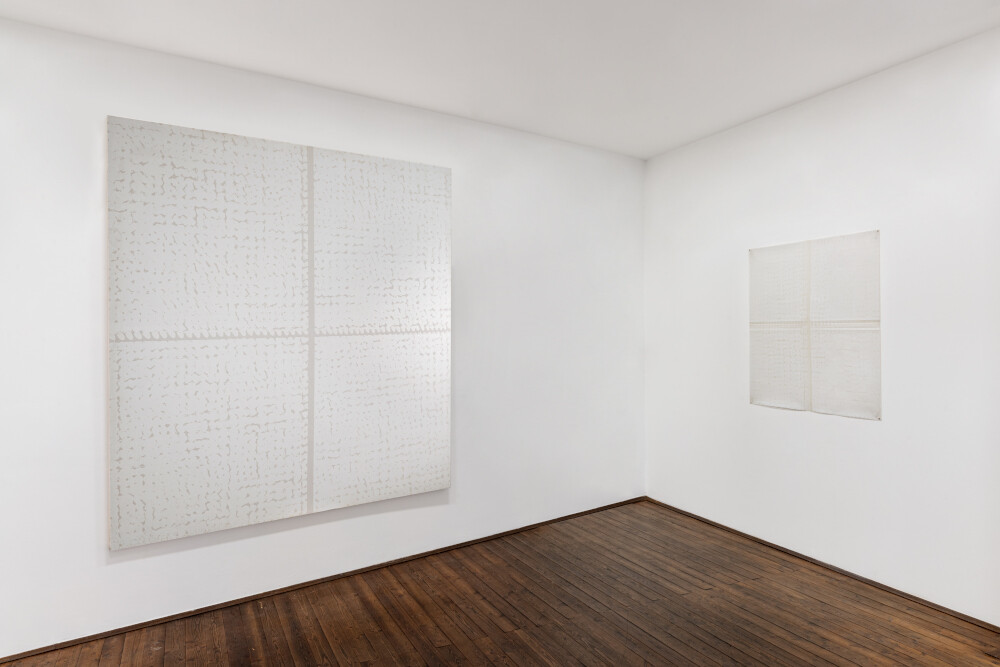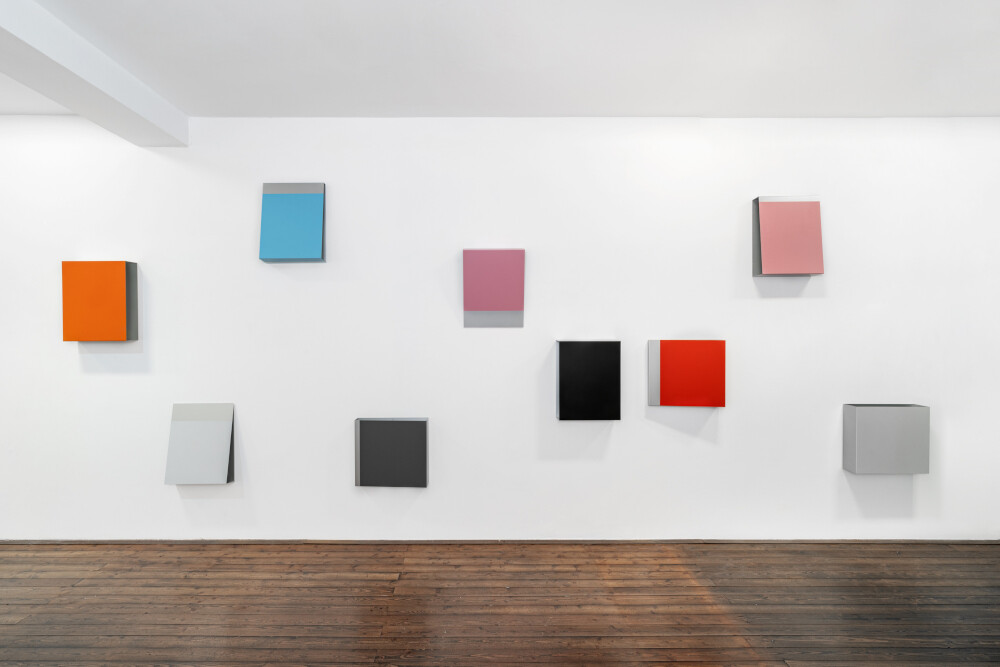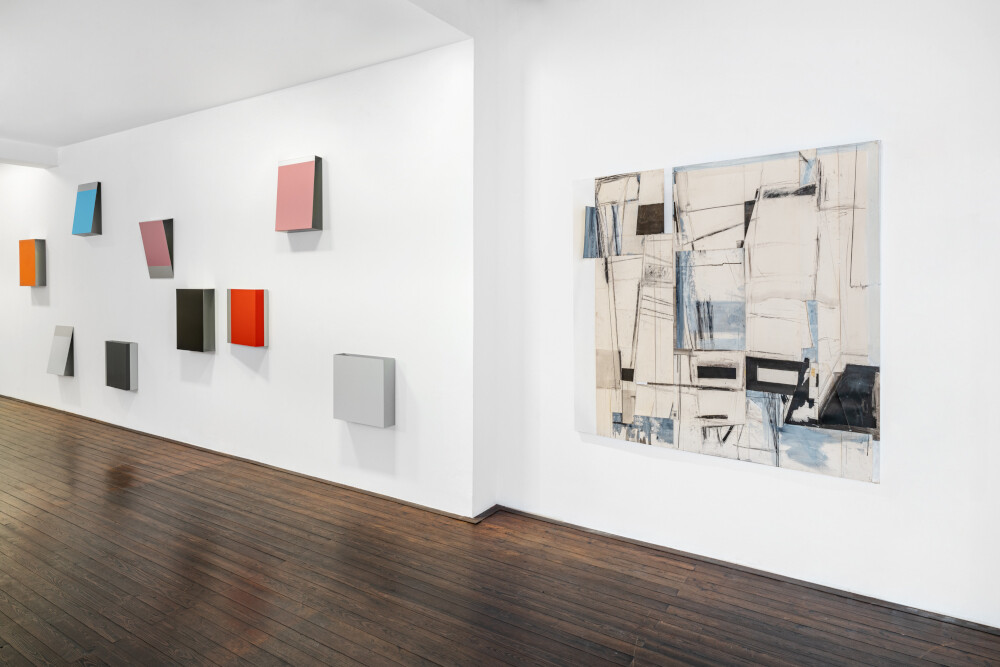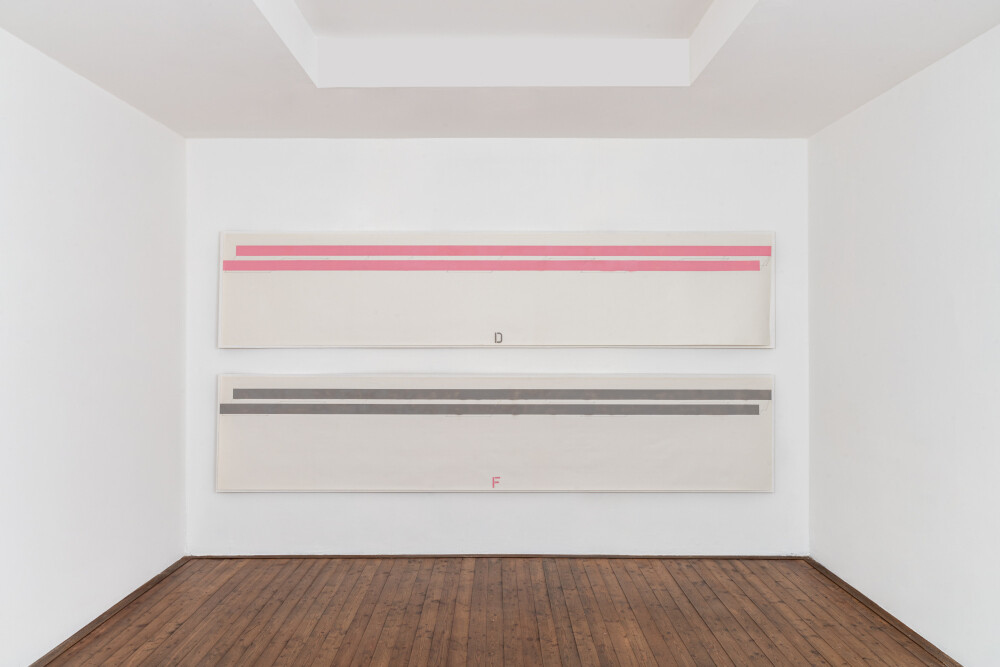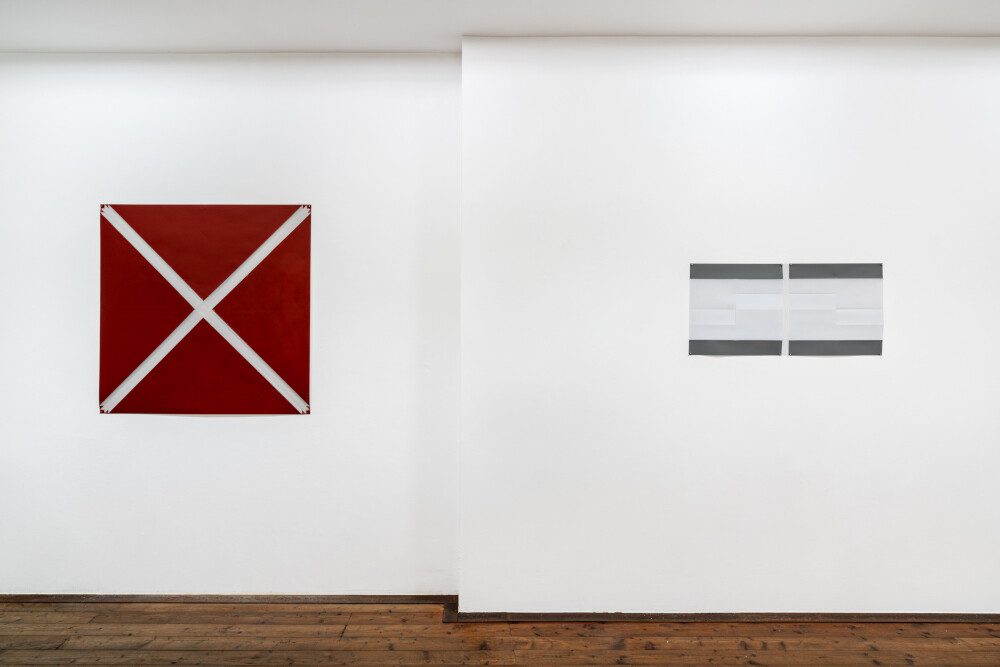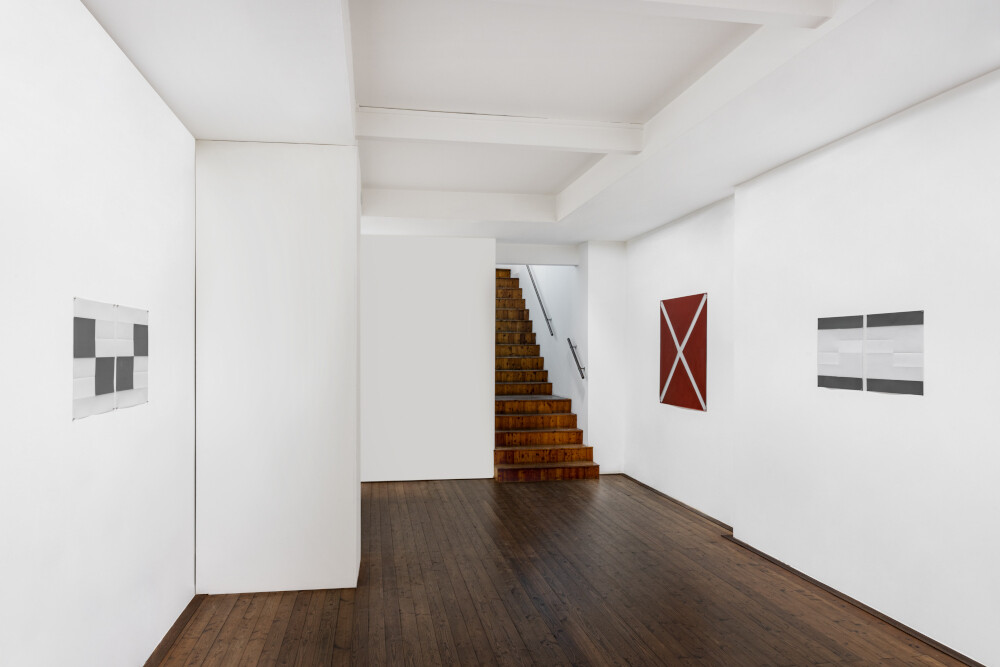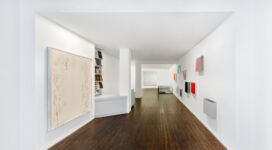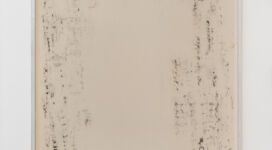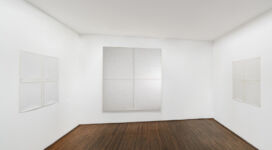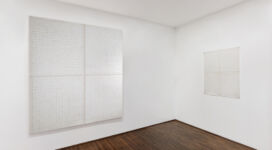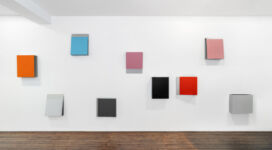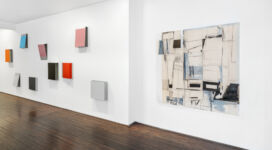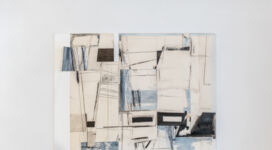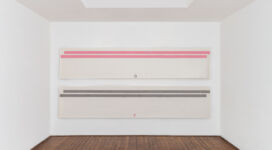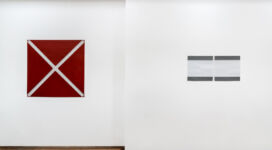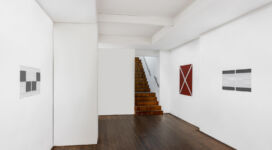| GUY MASSAUX | Biography | |
| works 1987-1999 part one | ||
| curated by ANDREA ALIBRANDI | ||
| 30 march – 12 may 2023 |
Il Ponte continues the exhibition season with the solo show dedicated to Guy Massaux, Belgian artist whose a selected nucleus of works is exhibited from 1987 to 1999. In 2024 gallery Secci in Milan will present a series of works by the artist from 2004 to 2013.
The itinerary of the exhibition winds through some large size charcoal drawings (1987), ink and acrylic collages (1989), large papers on canvas (1994), drawings on tracing paper (1995-1997), boxes-objects-paintings in aluminum and colored paint (1999).
After the works of 1987, as Stephen Melville (1998) writes, “it seems natural to situate Guy Massaux’s work – in its materials, procedures, systematic nature, and general look – somewhere in the orbit of a minimalism passing over toward conceptualism in ways similar to Sol Lewitt, for example. But perhaps the most interesting part of this comparison is the least visible, and this lies in the two artists’ common orientation to drawing. Indeed, Massaux has throughout his career been extremely involved in the highly theoretical drawing program at the Ecole des Beaux Arts in Brussels (…) with concerns – that have animated that program – as is evident from the work itself, strongly formal, but they take off a ground significantly different from that associated with American formalism. In particular, this line of work – which, on a broad reading, would include the early work of Buren, Mosset, Parmentier and Toroni, that of the shortlived Supports-Surfaces, the painting of François Rouan, Martin Barre, and, most recently, Christian Bonnefoi – understands painting (and, implicitly, drawing) as a sustained exploration of its fully material conditions. As such, it is not especially driven by an orientation to the “purely visual” or “optical”, and is instead very open to the thought that the sculptural might be among the material capacities of painting, and that the acknowledgment of such capacities need not involve some passage beyond painting”.
